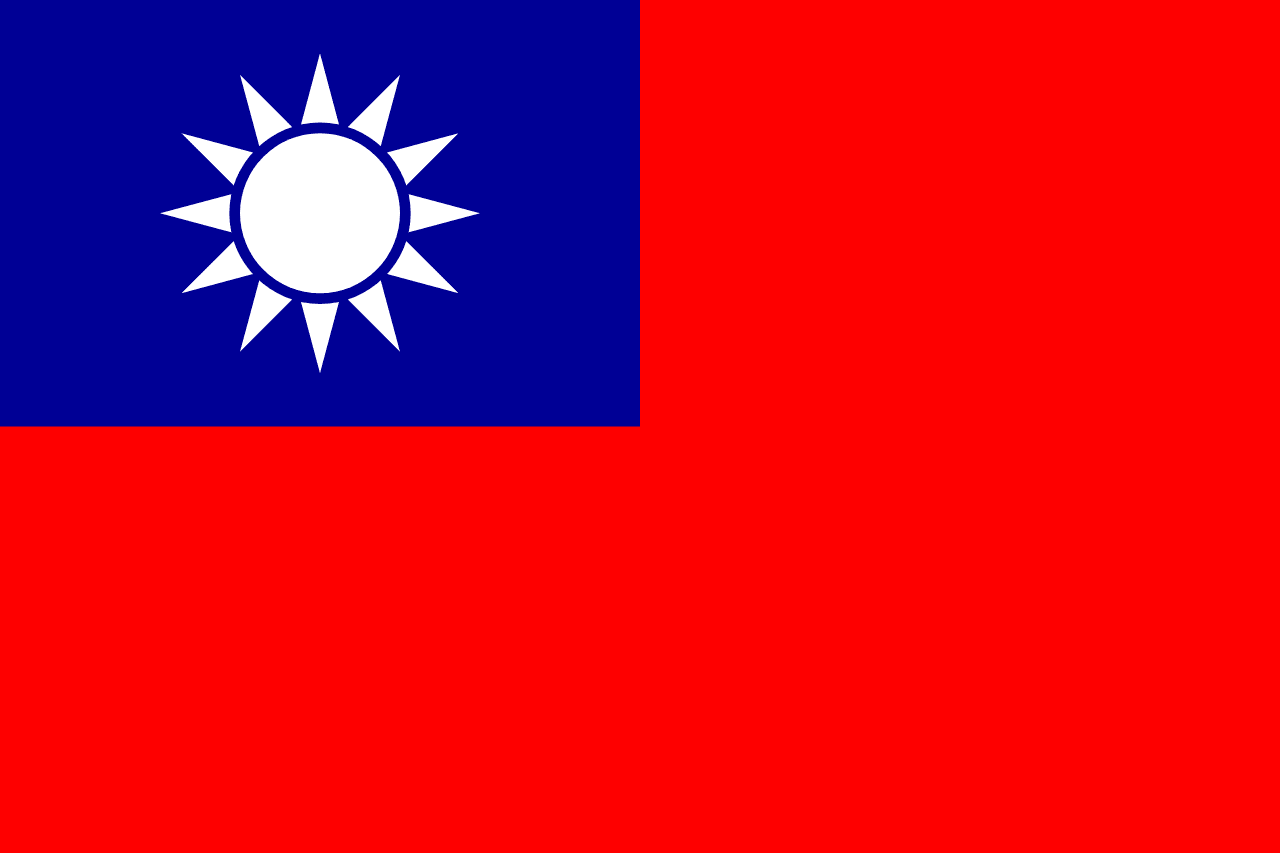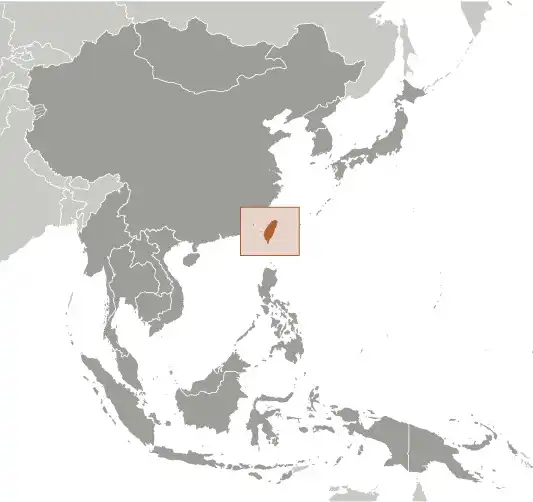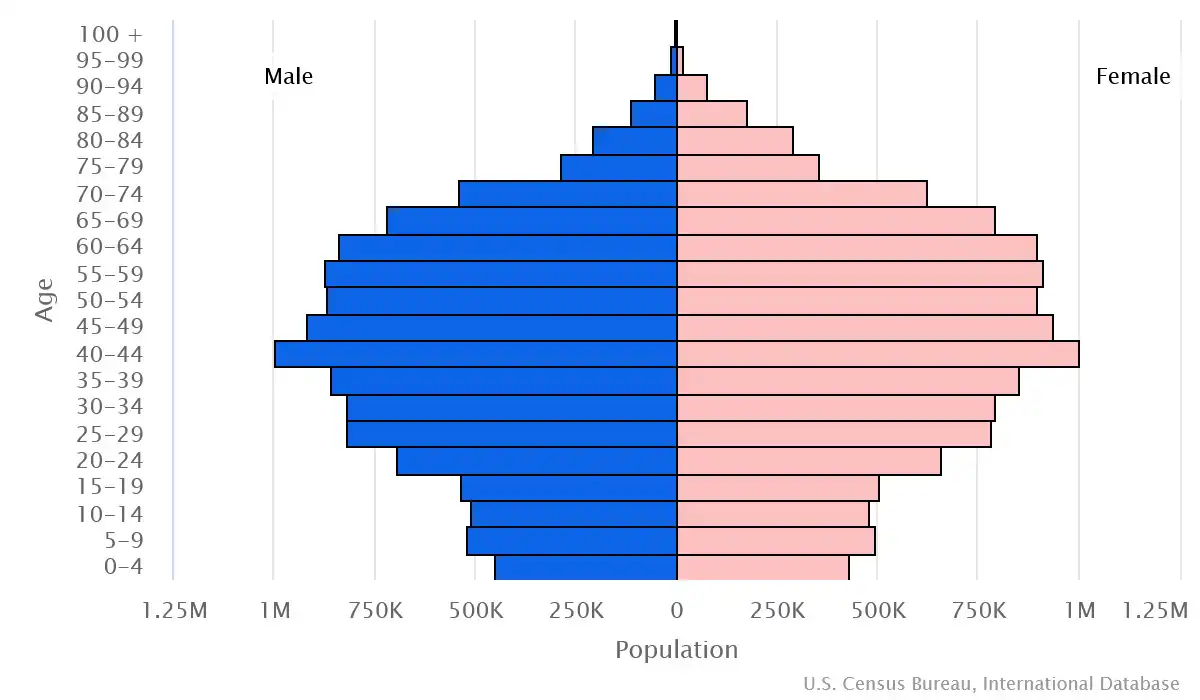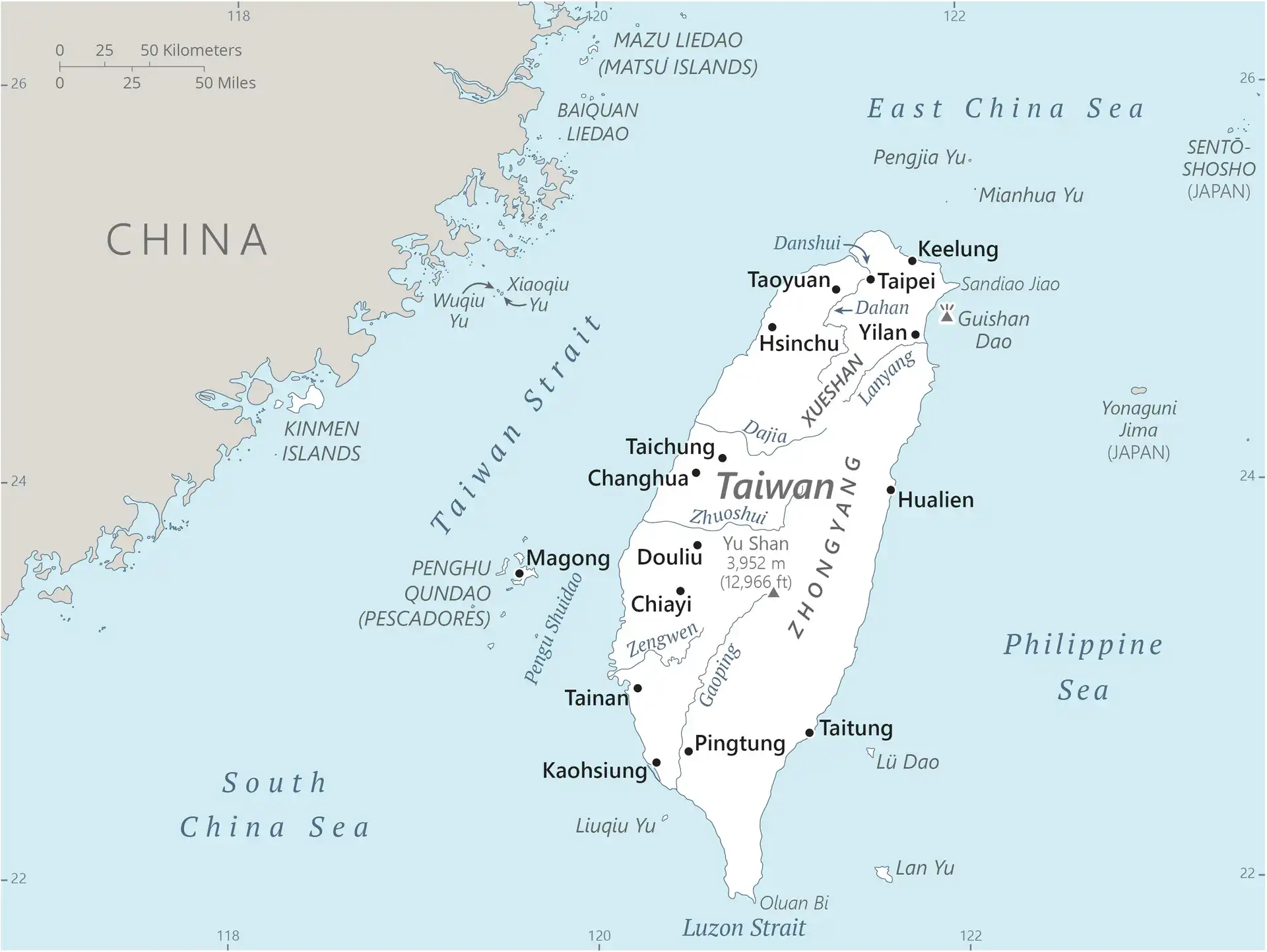
Taiwan Country Profile
Key Facts of Taiwan

| Government type: | semi-presidential republic |
| Capital: | Taipei |
| Languages: | Mandarin (official), Min Nan, Hakka dialects, approximately 16 indigenous languages |
Taiwan Demographic Data
Ethnic Groups in Taiwan(est. ?)
Religious Groups in Taiwan (2005 est.)
Age pyramid of Taiwan

Taiwan Economy Statistics
Economic overview of Taiwan
high-income East Asian economy; most technologically advanced computer microchip manufacturing; increasing Chinese interference threatens market capabilities; minimum wages rising; longstanding regional socioeconomic inequality
Taiwan Real GDP (purchasing power parity) in Billion $
Taiwan Real GDP per capita in $
Taiwan's Exports & Imports in billion $
Top 5 Import Partnerin 2022 (54%) of Taiwan
Top 5 Import Commodities in 2022 of Taiwan
- integrated circuits 💻
- crude petroleum 🛢️
- machinery ⚙️
- natural gas 💨
- coal ⚫
Top 5 Export Partnerin 2022 (62%) of Taiwan
Top 5 Export Commodities in 2022 of Taiwan
- integrated circuits 💻
- machine parts ⚙️
- computers 💻
- refined petroleum ⛽
- plastics 🧴
Geography of Taiwan
Map of Taiwan

Land and Water Distrubtion of Taiwan
Natural Resources of Taiwan
- small deposits of coal ⚫
- natural gas 💨
- limestone 🪨
- marble 🪨
- asbestos 🏭💨
- arable land 🌱
Climate inTaiwan
tropical; marine; rainy season during southwest monsoon (June to August); persistent and extensive cloudiness all year
History of Taiwan - a Summary
First inhabited by Austronesian people, Taiwan became home to Han immigrants beginning in the late Ming Dynasty (17th century). In 1895, military defeat forced China's Qing Dynasty to cede Taiwan to Japan, which then governed Taiwan for 50 years. Taiwan came under Chinese Nationalist (Kuomintang, KMT) control after World War II. With the communist victory in the Chinese civil war in 1949, the Nationalist-controlled Republic of China government and 2 million Nationalists fled to Taiwan and continued to claim to be the legitimate government for mainland China and Taiwan, based on a 1947 constitution drawn up for all of China. Until 1987, however, the Nationalist Government ruled Taiwan under a civil war martial law declaration dating to 1948. Beginning in the 1970s, Nationalist authorities gradually began to incorporate the native population into the governing structure beyond the local level.
The democratization process expanded rapidly in the 1980s, leading to the then-illegal founding of the Democratic Progressive Party (DPP), Taiwan’s first opposition party, in 1986 and the lifting of martial law the following year. Taiwan held legislative elections in 1992, the first in over 40 years, and its first direct presidential election in 1996. In the 2000 presidential elections, Taiwan underwent its first peaceful transfer of power with the KMT loss to the DPP and afterwards experienced two additional democratic transfers of power in 2008 and 2016. Throughout this period, the island prospered and turned into one of East Asia's economic "Tigers," becoming a major investor in mainland China after 2000 as cross-Strait ties matured. The dominant political issues continue to be economic reform and growth, as well as management of sensitive relations between Taiwan and China.
